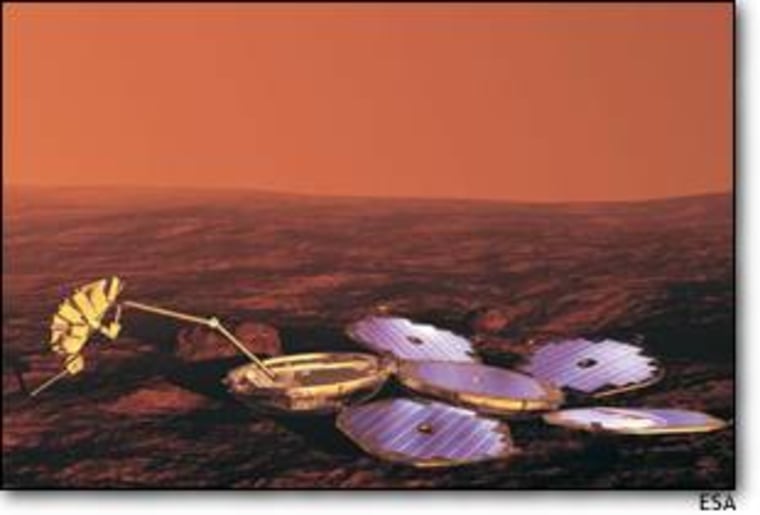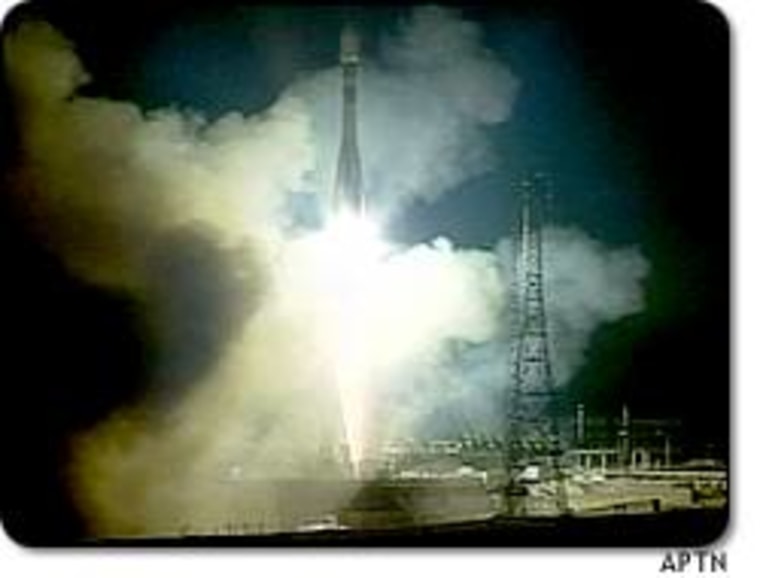A robotic spacecraft built by the European Space Agency left Earth on Monday to begin a mission to Mars, where it will spend nearly two years searching for signs of life.
A Soyuz FG booster rocket sent the Mars Express probe into orbit at 9:45 p.m. Moscow time (1:45 p.m. ET) from the Baikonur Cosmodrome in Kazakhstan.
About 90 minutes later, the spacecraft was given an extra push to send it on a six-month journey to Mars, representing the first interplanetary mission to have the European Space Agency in the lead role.
Mars Express project manager Rudi Schmidt said he was “highly emotional” during the launch.
“I had tears in my eyes when the Soyuz lifted off,” he said. “We will answer at least two key questions: Is there water and, finally, is there life on Mars?”
Several days before the spacecraft reaches Mars in December, the British-built Beagle 2 lander is set to separate from the Mars Express orbiter. Beagle 2 — named after the HMS Beagle, which carried naturalist Charles Darwin on his historic trip to the Galapagos Islands — will parachute down to the Martian surface on Dec. 25. The tiny lander will head to Isidis Planitia, north of the Martian equator where traces of life could have been preserved.
Scientists think Mars once had plenty of water and appropriate conditions for life but lost it billions of years ago, possibly after being hit by asteroids. It is believed that water might still exist on Mars as underground ice.

The lander would dig into Mars to search for organic materials and check the atmosphere for traces of methane produced by living organisms — the first such search since 1976, when twin U.S. Viking landers brought inconclusive results.
The Mars Express orbiter will map the planet, use a powerful radar to probe its surface for evidence of water, and measure water concentrations in the atmosphere.
ESA science director David Southwood said the mission may yield insights about Earth’s future as well as Mars’ past. “(What happened on Mars) is very important because it could happen to us on Earth,” he said.
NASA is sending its own twin Mars Exploration Rovers later this month in a $800 million mission to try to answer similar questions about water and life on the planet. A Japanese spacecraft launched in 1998, called Nozomi, also continues its voyage toward Mars, despite some electronic troubles.
The launching of many spacecraft at once isn’t accidental: Celestial mechanics are bringing Mars and Earth closer together than they have been for a long time, helping save fuel and travel time.
Of 34 unmanned American, Soviet and Russian vehicles sent to Mars since 1960, two-thirds ended in failure. The spacecraft that succeeded helped vastly expand human knowledge about Mars. Just 40 years ago, some experts still believed that thick vegetation grew on Mars — that belief was dispelled in the 1960s by NASA spacecraft which beamed back images of Mars’ barren surface.
Tricky Beagle
The operation to eject Beagle 2 will be highly delicate. The 143-pound (65-kilogram) lander — too light to have a steering mechanism — must rely on the 1.3-ton Mars Express to guide it into the proper descent path by dropping it at a very precise moment at a specified speed.
Once the lander is ejected, mission controllers will have to adjust Mars Express’ trajectory and reduce its speed to allow gravity to capture the vehicle.
Mars Express is to remain in its Martian orbit for at least one Martian year, 687 Earth days. Its antenna will receive data from Beagle 2 and the orbiter’s own instruments and beam it to Earth in daily communication sessions. Beagle 2’s primary mission is scheduled to last six months.
The Associated Press and Reuters contributed to this report.
